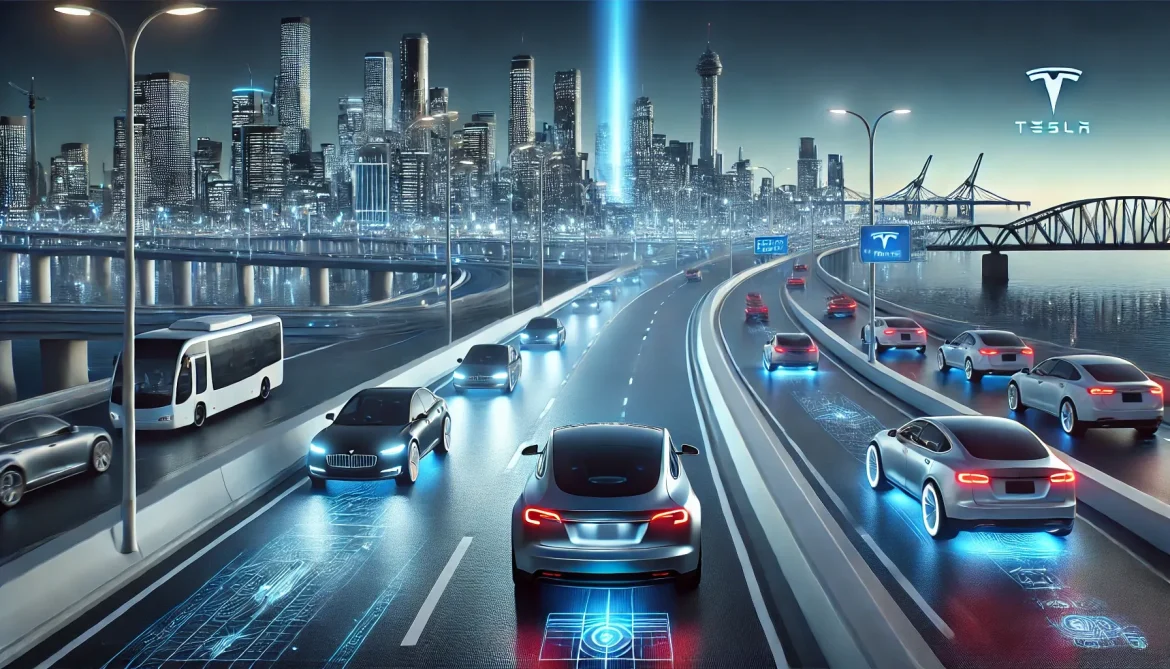Artificial intelligence (AI) is already playing a crucial role in the automotive industry, but in the next decade, its impact will expand significantly. From fully autonomous vehicles to intelligent manufacturing lines, AI is reshaping the entire automotive ecosystem.
According to McKinsey & Company, by 2035, the global AI market in the automotive industry is expected to reach $74.5 billion, with automation in vehicle production and operations increasing by more than 40%.
This article explores key AI-driven advancements in the automotive sector, supported by concrete examples, figures, and forecasts.
1. Autonomous Vehicles: The Future is Closer Than It Seems
1.1. Fully Self-Driving Cars
Today, we are already witnessing major breakthroughs in autonomous transportation. Companies such as Tesla, Waymo, Cruise, and Baidu are actively testing self-driving technology.
According to Statista, by 2030, the number of autonomous vehicles on the roads is expected to exceed 50 million.
Examples:
• Waymo (a subsidiary of Alphabet) has launched a self-driving taxi service in Phoenix and plans to expand further.
• Tesla continues to improve its Full Self-Driving (FSD) system, aiming for Level 4–5 autonomy.
• Mercedes-Benz has received approval for Level 3 autonomous driving in Germany, making it the first company with officially sanctioned self-driving capabilities on certain roads.
1.2. Impact on the Taxi and Logistics Market
Companies like Uber, Lyft, and Didi are already investing in AI for automated transportation. According to Goldman Sachs, by 2035, self-driving taxis could account for up to 60% of the taxi market, reducing ride costs by 40-50%.
In logistics, AI is also reshaping the industry:
• Amazon and FedEx are testing autonomous trucks, reducing transportation costs by 30%.
• TuSimple and Embark are developing self-driving long-haul trucks.
2. Artificial Intelligence in Car Manufacturing
AI is not only improving driving capabilities but also revolutionizing the car production process.
2.1. Smart Factories and Automated Production Lines
According to PwC, by 2030, up to 80% of automotive factories will integrate AI and robotics for manufacturing.
Example:
• BMW already uses AI for automated quality control on assembly lines, reducing defects by 20%.
• Volkswagen is investing $2 billion in next-generation factories, where robotic assistants will perform up to 70% of operations.
2.2. Predictive Maintenance
AI helps companies forecast malfunctions and minimize equipment downtime.
• Ford implemented a predictive maintenance system that cut repair costs by 15% and increased manufacturing efficiency by 10%.
3. Smart Cars: Personalized Technologies
AI is not only making cars autonomous but also enhancing their comfort, safety, and connectivity features.
3.1. Personalized Interfaces
• BMW and Mercedes-Benz are developing AI-powered voice assistants that adapt to driving styles.
• Tesla uses AI to adjust suspension and vehicle dynamics based on driver behavior.
3.2. Biometric Authentication
• Hyundai is testing facial recognition and fingerprint-based car access.
• Apple is working on a keyless car concept where drivers are identified via Apple ID.
4. Infrastructure and Smart Roads
AI is transforming not just cars but also the infrastructure they rely on.
4.1. Intelligent Traffic Management
• Singapore and Tokyo are integrating AI into traffic light systems, reducing congestion by 20-30%.
• China is testing smart roads with sensors that dynamically adjust lane markings and speed limits in real time.
4.2. Vehicle-to-Everything (V2X) Technology
V2X technology allows vehicles to “communicate” with infrastructure.
Example:
• Audi and Ford are already using V2X to warn drivers about approaching accidents or changes in traffic conditions.
5. Sustainability and Emission Reduction
AI is also driving the development of environmentally friendly transportation.
5.1. Fuel and Energy Consumption Optimization
• Toyota and Honda are developing AI systems that analyze driving styles and reduce fuel consumption by 15%.
• Waymo implemented AI-powered energy management, cutting battery consumption by 10%.
5.2. The Rise of Electric Vehicles
• Tesla, Rivian, and Lucid Motors use AI to optimize battery efficiency.
• According to the International Energy Agency (IEA), by 2030, there will be 125 million electric vehicles on the roads—four times the current number.
Conclusion
AI is already transforming the automotive industry, and in the next 10 years, this transformation will accelerate. Key expected changes include:
• Self-driving cars will account for 30-40% of the passenger transport market.
• Car manufacturing plants will be 70-80% automated.
• Smart roads and V2X technologies will become standard.
• Sustainability innovations will cut vehicle emissions by 25-30%.
The industry is entering a new era, and companies that successfully integrate AI will secure leadership positions.



